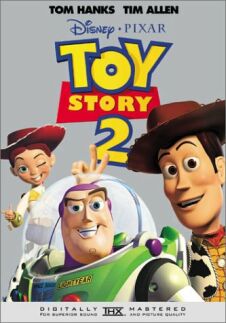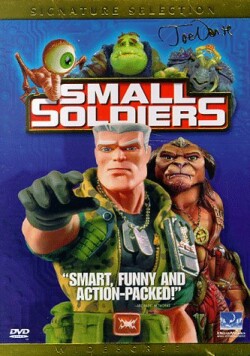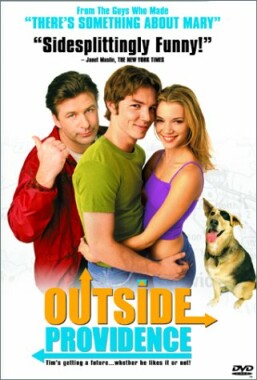Toy Story 2
Like its predecessor, Toy Story 2 is a triumph of technology — the relatively new technology of computer animation — if not of moviemaking. In fact, as a kind of technological marvel it is naturally impervious to criticism on any merely airy-fairy, aesthetic grounds. Like the Bond films with which it might otherwise be thought to have little in common, it must count as generic entertainment — more like a video game than a bona fide movie. The kids will almost certainly love it for that reason, but you may wish to keep them at home lest it make a further contribution to the general debasement of the standards of taste appropriate to proper movies. I myself am inclined to think that neither an occasional Toy Story nor an occasional video game is likely to do much lasting damage, but it is not impossible that I am wrong.
What is just worth noting about the film is the level of sophistication it presupposes in its audience. For although the title is “Toy Story,” it would be more accurate to describe it as “Collectibles Story.” There is an animated human character called Andy to whom the animated toys are supposed to belong, but the animation that they have in common tends to put them on a footing of equality. Why should one puppet own another puppet? At any rate, Andy is of little interest through most of the movie. Instead, what the cartoon has that is analogous to dramatic conflict all takes place either between the toys themselves or between them and a collector of vintage toys called Al, the proprietor of Al’s Toy Barn.Woody, the wooden cowboy (voice of Tom Hanks) makes a mistaken appearance among the junk at a yard sale, where Al gets hold of him, hoping to sell him for thousands of dollars to a Japanese collector.
Woody, we learn, is part of an early collection of tie-ins to a long-vanished TV show of the 1950s called “Woody’s Round-up.” When he finds himself among the others of the set, including Jessie the yodeling cowgirl, Stinky Pete the prospector and a horse, there is a moment of purported self-discovery. “You don’t know who you are, do you?” the others ask Woody. As it happens, he doesn’t. He thought he was just a toy, but it turns out he is much, much more. He is more, even, than a collectible. Because “Woody’s Round-Up” was canceled after only a season when Sputnik created the vogue for space toys (thus is the theme of the first Toy Story reprised), the toys are extremely rare. Woody and his friends, particularly as a set, are museum pieces.
But living out their wooden days behind glass is a cold and lonely existence for toys, it seems. At least those, like Woody, who come from loving homes. He is thus forced to choose between remaining, for another year or two, the beloved of his juvenile owner — after which time he will in all likelihood find himself consigned to “some landfill”— or assuming the toyish distinction of a place of honor in a Japanese museum where, “adored by kids everywhere,” he will “live forever.” He is torn. Well, anybody would be. Does he choose love or honor? You and your darling moppets will both, probably, be able to guess, even though it need scarcely be added that it is a dilemma for which there is and can be no precedent in the real world. But you and the kids both will have had enough experience with Disney sentimentality to be able to extrapolate.
Discover more from James Bowman
Subscribe to get the latest posts to your email.







